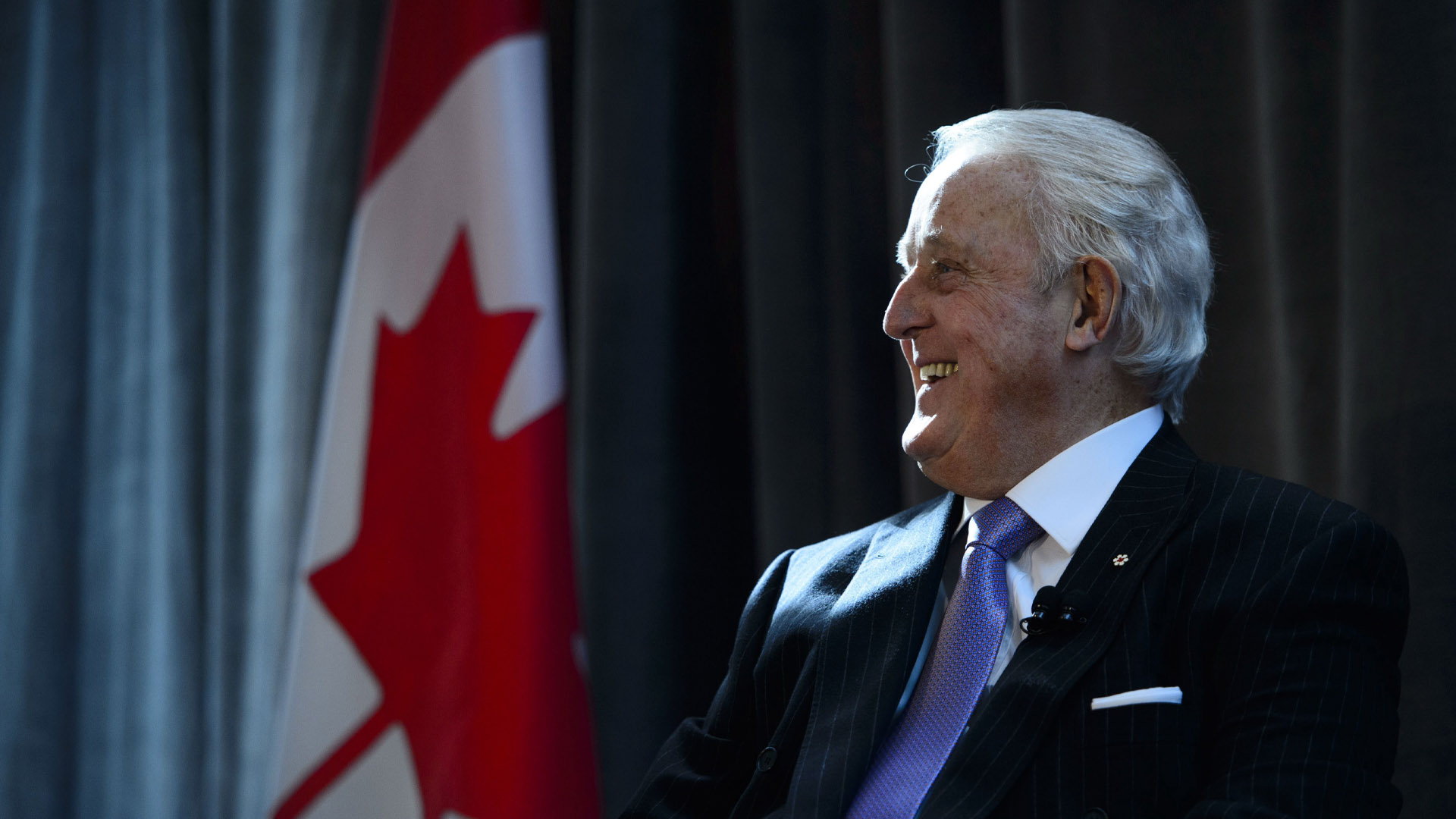
(Version française disponible ici)
The Mulroney government (1984–1993) was a contemporary of the Reagan administration (1981–1989) in the United States and the Thatcher government (1979–1990) in the United Kingdom. All three were characterized by their neoliberal economic policies, which transformed the welfare state that their predecessors had taken decades to build.
So-called “Reagonomics” and Thatcherism were defined by a distrust of the planned economy, government corporations and universal welfare. Reagan made his mark with the famous quote: “Government is not the solution to our problems. Government IS the problem.”
Generally speaking, neoliberalism blames a sprawling, intrusive state for undermining the economy. The economic recessions of 1975 and 1982 seemed to confirm this. Both Reagan and Thatcher championed trickle-down economics: when companies prosper, workers get richer and all of society benefits.
Brian Mulroney showed the same colors from the start of his first mandate, creating the Ministry of State for Privatization and Regulatory Affairs in 1986, a portfolio entrusted to Barbara McDougall. Taking up the project from his predecessor, then prime minister Joe Clark, Mulroney began the withdrawal of the Canadian state as a producer of goods and provider of services.
When the Conservatives came to power, the federal government owned 67 Crown corporations, with a combined value of $50 billion. Nine companies were privatized under Mulroney, including Air Canada, Canadair, Canadian Arsenals and Teleglobe (now a subsidiary of India’s Tata Communications). Privatization of Petro-Canada and Canadian National began (and was completed under the Chrétien and Martin governments).
The “good” and the “bad” poor
From the third government of William Lyon Mackenzie King (1935–1948) to the second government of Pierre Elliott Trudeau (1980–1984), the welfare state had not been seriously challenged. On the contrary, social assistance, particularly universal health insurance, had become one of the features that set Canada apart from the United States in the eyes of Canadians. Today, it remains one of the cornerstones of Canadian identity.
Let’s recall some of the milestones in the construction of the Canadian welfare state: the Unemployment Insurance Act in 1940, the Family Allowance Program in 1944, the Old Age Security Act in 1952, the Hospital Insurance and Diagnostic Services Act in 1957, the Canada Pension Plan and Guaranteed Income Supplement in 1965, and the Medical Care Act in 1966.
The 1970s saw no further major initiatives, but programs were reformed to reach more Canadians, and to ensure that basic needs of the population were met.
One of the Mulroney government’s objectives was to improve the strained relations between Canada and the United States that had marked the Trudeau era. The 1987 North American Free Trade Agreement (NAFTA) required a semblance of economic uniformity. Competition between companies in the two countries would have been distorted if Canadian companies could afford to offer lower wages, thanks to the existence of social programs that would have offset the income of Canadians. Completely aligning Canada with the U.S. by weakening the welfare state to the American level would not have been a winning formula for the Progressive Conservative Party of Canada. Instead, the Mulroney government ended the universality of some welfare programs, reducing some of the differences between the two countries.
Like most of his Conservative contemporaries, Mulroney presented the failure of the welfare state to eliminate poverty as proof of the need for fundamental reform. A line was drawn between the “good poor,” those in real need of state assistance, and the “bad poor,” those who take advantage of the system. The problem was not that social programs were running out of money, but that layabouts, crooks and people who didn’t need the money were absorbing resources.
“Does the man who makes $500,000 a year as bank president need to collect family allowances?” asked Mulroney at a town hall meeting in Vancouver in 1984. The example was extreme, but the message was clear: Some Canadians were receiving government welfare without needing it.
Starting in 1944, all Canadian families had received the same family allowance, regardless of their financial situation. As of 1989, some families had to repay their family allowance, depending on their income. In 1993, the Conservative government abolished universal family allowances, replacing them with the Child Tax Benefit, a selective program available only to low-income households. This new program was presented at the time as an incentive for women to stay at home.
Other programs were slimmed down with the stated official objective to reduce the deficit. Eligibility rules for the employment insurance program were tightened to serve fewer workers; benefit rates were lowered and weeks of eligibility were cut. Old Age Security payments were reduced, based on income. Federal participation in provincial social assistance programs was reduced. Universal benefits were replaced by tax credits.
Their main beneficiaries were not low-income families. The Canadian tax has become increasingly complex, and only a minority of people are able to benefit from all the tax advantages to which they are entitled.
The government’s official objective was always to give more aid to the truly needy, while cutting off assistance to those who were not. There was also a desire to prevent state financial assistance from discouraging recipients from working. “Unemployment insurance was not designed to become a system of income support and supplementation,” states the report of the Commission of Inquiry on Unemployment Insurance, tabled in 1986.
Discreet, more modest dismantling
According to journalist Linda McQuaig, Mulroney was a quiet disciple of Reagan and Thatcher. While the American and British governments dismantled the welfare state with great fanfare in the name of the economy, Mulroney quietly attacked it, always insisting that the reforms were aimed at a more effective fight against poverty.
When it came to privatization, however, the government was so sure it was rowing in the direction of public opinion that the official discourse exaggerated the scale of the movement. Not only did the government privatize fewer companies than had been officially announced, but new Crown corporations were created under the Mulroney Conservatives without great fanfare.
The Mulroney years were only the beginning of the decline of the Canadian welfare state. Liberals Jean Chrétien and Paul Martin ended the Canada Assistance Plan and reformed the Employment Insurance program to make it even more restrictive. Between 1993 and 2002, the proportion of unemployed people eligible for EI fell from 57 per cent to 38 per cent. Stephen Harper’s Conservative government raised the minimum age for entitlement to Old Age Security to 67 (a measure since cancelled by the Trudeau government).
By transforming universal programs into selective ones, the Mulroney government changed the spirit of the Canadian welfare state. Liberals and Conservatives alike sought to provide the absolute minimum. They sought to reduce state financial assistance as much as possible, without placing more Canadians below the poverty line. The objective was to save the truly needy without risk of shrinking the labour pool, and to avoiding wasteful spending. Mulroney’s policies may have been less radical than Thatcher’s or Reagan’s, but they opened a door that future governments would walk through.









